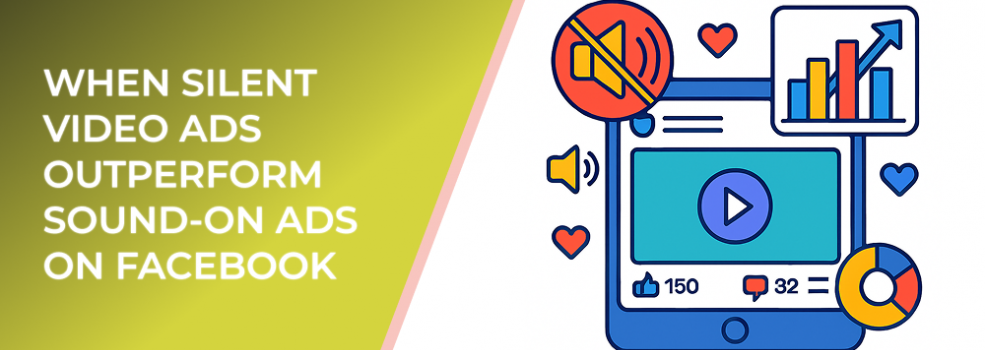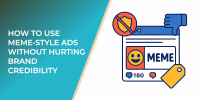Roughly 85% of Facebook videos are watched without sound, according to Meta’s own reports. This shift reflects how people use social media: scrolling in public spaces, during commutes, or while multitasking. As a result, viewers rely heavily on visuals, motion, and captions to understand content.
For advertisers, this means that campaigns designed with sound-off behavior in mind can capture attention faster and communicate more clearly. Instead of competing for auditory engagement, silent videos win by being instantly understandable.
Why Silent Ads Often Perform Better
1. Accessibility and clarity
Videos with captions can increase view time by up to 12%, as users grasp the message without turning up the volume. Captions also make your content accessible to users with hearing impairments—a win for inclusivity and performance alike.
2. Lower cognitive load
Silent ads rely on strong visual storytelling and clear branding. When sound is removed, the message has to stand on its own. This constraint forces clarity, making ads feel less overwhelming and more digestible.
3. Higher completion rates
Data from Facebook’s ad reports shows that muted videos often achieve up to 30% higher completion rates than sound-on videos. People are less likely to skip when the message flows visually rather than relying on dialogue or music.
4. Automatic playback advantage
Facebook’s default setting is autoplay with sound off. That means your silent ad starts playing immediately as users scroll, while sound-on ads often require an extra tap. In a feed-driven environment, that single friction point can mean thousands of lost impressions.
When Sound Still Matters
Sound isn’t useless—it just needs the right context. For example:
-
Product demos or testimonials benefit from real voices.
-
Emotional storytelling can use music to deepen connection.
-
Retargeting audiences who already know your brand may respond better to familiar jingles or tones.
But for first-touch awareness campaigns or mobile-heavy audiences, silence is often golden.
How to Design for Sound-Off Success
-
Start strong visually: Hook the viewer in the first two seconds with movement or contrast.
-
Add captions or text overlays: Communicate your message clearly without relying on audio.
-
Use visual cues: Arrows, animations, or close-ups can guide attention.
-
Focus on branding: Include your logo or brand color early to aid recall.
-
Test variants: Run A/B tests comparing silent and sound-on versions for the same creative.
Final Thoughts
The future of video ads on Facebook isn’t louder—it’s smarter. Silent ads align with how users actually browse and consume content. By crafting videos that speak visually rather than verbally, advertisers can meet audiences where they are and outperform sound-heavy creatives.
Suggested Reading
If you found this article helpful, you might also like:

